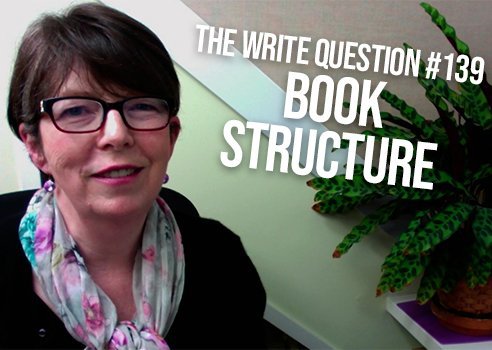Viewing time: 4 mins 25 secs.
The Write Question is a weekly video podcast about writing that I started in 2017 and that ran, more or less weekly, until April 2022. This is a republication of issue #139, which discusses how to structure a book. The post first ran on May 8/20.
Transcript:
How do you structure a book? That’s the topic I’m addressing today in The Write Question. I’m Daphne Gray-Grant, the Publication Coach, still in pandemic mode.
I have a question from Tiberiu Dinescu, a writer based in Bucharest, Romania. Here’s what he’s asked by email….
“I have an idea for a book and I’ve already done a mindmap, so I guess my question is: Is it too early to structure? Or should I just start writing freely and then structure when editing? My early experience with writing has been with blog posts and essays, where I could go wild with an inspirational moment. Now, I want to write my first book and I think I’m blocked by my lack of experience.”
Thanks for your question, Tiberiu. You and I have already exchanged several emails, but I forgot to ask whether your book was fiction or non. The answer to your question is slightly different for both of these genres, so let me explain.
If you’re writing fiction, you get to decide when you want to add structure. And this will depend on whether you’re naturally a plotter or a pantser. Let me define those terms for you.
Plotters are people who like (or need) to plan out their novel before they write. They often use index cards or charts or they may rely on software like Scrivener, link below, to help them plan. But the bottom line is, they don’t start writing until they know exactly where they intend to go.
A pantser, on the other hand, is someone who, “flies by the seat of their pants,” meaning they don’t plan out anything, or plan very little. Instead of figuring out their plot in detail, they generally focus on their characters. For them, the exercise of writing is more like waiting to see what their characters tell them to do.
And of course, still other writers like to merge both of these styles. You might call such people “plantsers.” The important thing to understand that there is no right or wrong for producing fiction. You need to do whatever suits you best.
But the story is different for non-fiction where some higher level of organization is absolutely necessary. I worry that you’ll end up spinning your wheels and making the job of editing — later — too difficult if you don’t have enough organization upfront.
The good news is that mindmapping can help you here, too. You just need to approach the mindmap slightly differently. I’ve done another video on this topic, link below, but let me recap the key points again:
A planning mindmap needs to be done on a much larger piece of paper. I like to use paper from a roll of unprinted-on newsprint. Given that most stores are closed during the pandemic, you can also create larger pieces of paper by taping together smaller ones.
The type of mindmap you’ve been doing until now— I call these inspirational ones — should take you no more than three to five minutes to complete. But a planning mindmap might take several hours or even several days.
The main objective of a planning mindmap is to identify all the chapters that are going to be part of your book — and, generally speaking, the information that will go into each of them. Once you’ve finished your planning mindmap, type up your list of chapters and put it into a Word document. There is the structure you need to help guide you as you write.
If you follow this advice, Tiberiu, I think you’ll save yourself a lot of hassle later, when it comes time to edit.
Finally, let me wrap up with a quote from the American actress and singer Anna Kendrick: “I thrive in structure. I drown in chaos.”
Tiberiu, I am so happy to hear that you’re already reaping the benefits of inspirational mindmapping. Just be sure to also use the other, slightly more organizational type of mindmapping if you are working on a non-fiction book.
*
If you’d like to learn more about how to make writing a happier and more rewarding process, check out my latest book Your Happy First Draft. I don’t sell it in bookstores or via Amazon. The only place to buy it is on my website, link on the screen below.
Links
How can I mindmap my book? (video)


